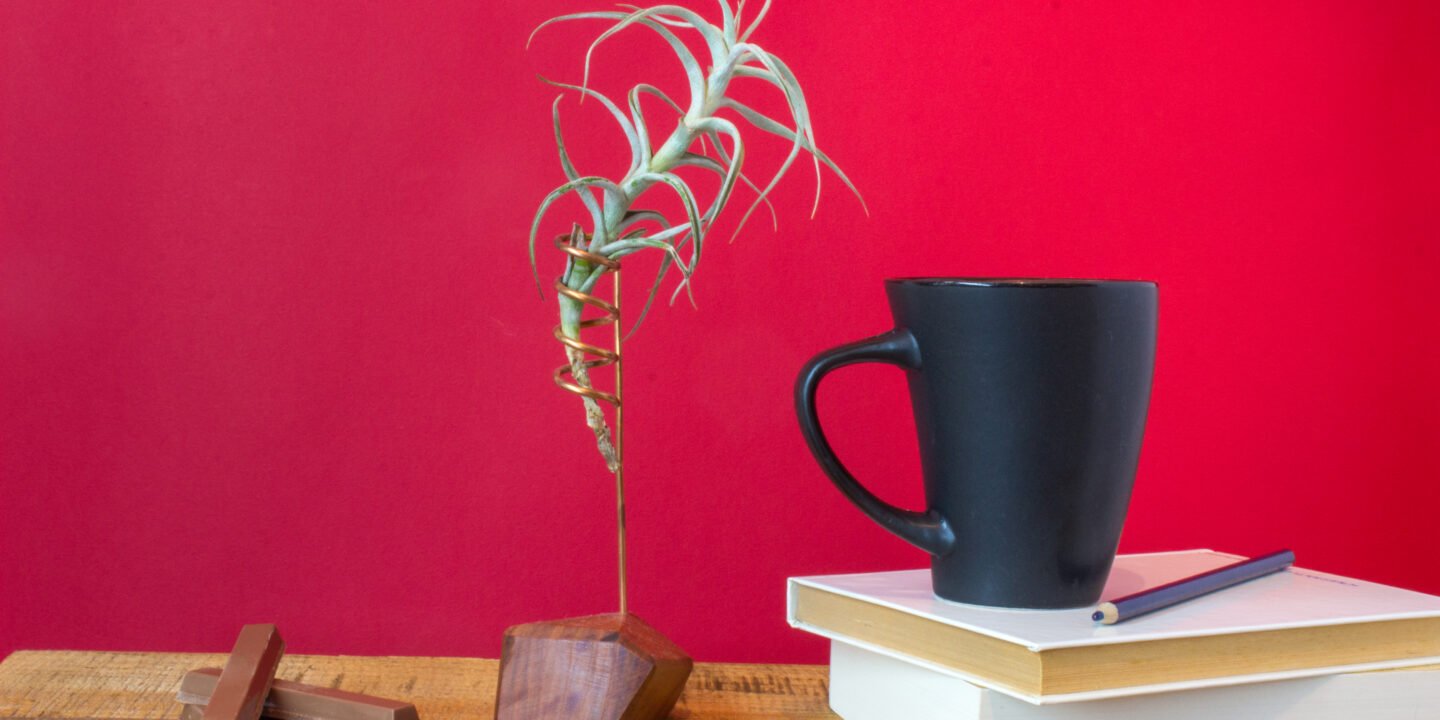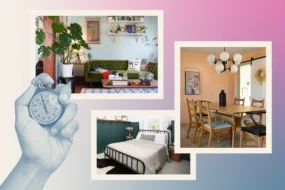
Home decor and design are all about creating a space that feels comfortable, inspiring, and truly your own. Whether you live in a cozy apartment, a spacious family home, or somewhere in between, the right design choices can dramatically change the look and feel of a room—without requiring a hefty budget. While interior design trends come and go, certain timeless principles always remain: simplicity, functionality, and beauty. In this post, we’ll explore stylish and simple decor ideas that will elevate your home, offering practical solutions to make every room feel polished, inviting, and personal.
1. Start with a Neutral Base
One of the easiest ways to create a calm and stylish atmosphere in any room is to start with a neutral base. Neutral tones—like whites, grays, beiges, and soft browns—form a clean canvas that allows other elements of your decor to shine. They also create a sense of serenity and open up the space, making smaller rooms feel larger and more airy.
- Wall Colors: Opt for light, neutral wall colors like soft whites or light greys. These shades act as a backdrop for furniture and decor, allowing other colors to pop and creating a seamless flow between rooms. You can also experiment with subtle tones like warm taupe or pale sage for a touch of character without overwhelming the space.
- Neutral Furniture: When choosing furniture, select pieces in neutral colors such as beige, gray, or navy. Neutral tones work well with any accent color, so you can easily swap out throw pillows, rugs, or curtains to change the mood of a room throughout the year.
The key is to keep the walls and major furniture elements simple, then build on them with layered textures, accessories, and accent colors to add personality and warmth.
2. Incorporate Natural Elements
Bringing the outdoors inside is a fantastic way to create a calming, stylish atmosphere. Natural elements like wood, stone, and plants not only add texture and color but also make your space feel grounded and connected to nature.
- Wood Accents: Wood is a versatile material that works in nearly every design style—from rustic and farmhouse to modern and minimalist. Consider incorporating wood through furniture (such as coffee tables, bookshelves, or side tables), accent pieces (like picture frames or light fixtures), or even wood paneling or shiplap on the walls. Natural wood tones, whether light or dark, create warmth and texture in any space.
- Stone and Marble: For a luxurious touch, incorporate natural stone or marble in your decor. A marble coffee table, for example, adds elegance to a living room, while stone countertops can elevate a kitchen or bathroom. Even small accessories like a stone vase, marble coasters, or a stone lamp base can have a big impact.
- Indoor Plants: Plants are an essential component of home design. They bring a burst of color, texture, and life into your home, while also improving air quality. From large leafy plants like fiddle-leaf figs and rubber plants to smaller succulents and cacti, plants can be used to fill corners, hang from the ceiling, or sit on shelves. If you’re not great with plant care, start with low-maintenance varieties like snake plants, pothos, or ZZ plants.
The beauty of incorporating natural elements into your home is that it instantly adds life and freshness to any space while maintaining an effortless, stylish look.
3. Add Statement Lighting
Lighting is a crucial element in home decor that is often overlooked. Not only does good lighting create ambiance, but it also enhances the aesthetic appeal of your space. The right light fixtures can elevate a room and add a sense of personality without overwhelming the design.
- Chandeliers and Pendant Lights: For a striking focal point, consider adding a chandelier or pendant lights to your dining room, living room, or entryway. Choose a fixture that complements your overall style, whether it’s a modern geometric design, a classic crystal chandelier, or a more rustic, industrial-inspired piece.
- Table and Floor Lamps: Floor and table lamps are a great way to add both light and style to any room. Look for lamps with interesting shapes or materials, like ceramic bases or fabric shades. These functional pieces can also serve as accent decor when placed next to seating areas or on side tables.
- Accent Lighting: Consider using LED strip lights under cabinets, inside bookshelves, or along the base of your furniture. Accent lighting highlights architectural features and creates a cozy atmosphere. Dimmer switches are also a simple way to adjust the mood of a room and create a more intimate setting.
Good lighting doesn’t just brighten a room; it also defines the overall mood and tone, so don’t skimp on this essential element of your home decor.
4. Layer Textures for Depth and Comfort
One of the best ways to add interest and sophistication to a room is by layering different textures. Texture brings depth and richness to a space, making it feel inviting and comfortable. It also adds dimension without needing bold patterns or excessive color.
- Textured Fabrics: Incorporate textured fabrics like velvet, linen, wool, or faux fur into your decor. A velvet throw pillow or linen curtains can add a soft, luxurious feel to your space. Wool or cotton blankets provide both texture and warmth, especially when draped over a sofa or bed.
- Rugs: Area rugs are an easy way to introduce texture and color into a room. Layering rugs can create a more personalized, bohemian feel. Consider placing a large, neutral rug on the floor, and then layering a smaller, patterned rug on top for added interest.
- Wood and Metal: Mixing natural materials like wood with modern metals like brass, copper, or chrome can create a dynamic contrast in your decor. For example, a wooden dining table paired with metal chairs or a metal-framed mirror on a wooden accent wall creates a blend of warmth and sleekness.
Textures are essential for creating a layered, lived-in feel that invites relaxation and comfort while adding sophistication to your home.
5. Embrace Minimalism for a Clean, Modern Look
The minimalist design philosophy emphasizes simplicity, functionality, and clean lines, making it perfect for those who appreciate an uncluttered, modern look. Minimalism can help you achieve a stylish, serene environment, perfect for unwinding after a long day.
- Declutter: Start by minimizing the number of items on surfaces. Remove excess decor and furniture that doesn’t serve a practical purpose. A clean, open space promotes relaxation and makes your home feel more expansive.
- Streamlined Furniture: Choose furniture with clean lines and simple designs. Think sleek sofas, low-profile coffee tables, and streamlined bookshelves. Opt for quality over quantity, focusing on items that are functional and beautiful.
- Less Is More: In a minimalist space, every piece of decor should have a purpose. Avoid over-accessorizing and focus on a few key statement pieces that bring character to the room. A simple vase with fresh flowers or a single piece of art on the wall can add interest without overcrowding the space.
By embracing a minimalist approach, you create a soothing and organized environment that allows the most important elements of your home design to shine.
6. Incorporate Personal Touches
The best home designs reflect the personalities and tastes of the people who live there. While it’s important to consider trends and styles, personalizing your space makes it feel truly yours. Incorporating personal touches into your decor not only makes a room more inviting, but it also creates a meaningful connection to the space.
- Art and Photography: Whether it’s family photos, travel snapshots, or original artwork, displaying meaningful pieces adds a sense of warmth and individuality to your home. Consider using frames in varying sizes and styles for an eclectic, gallery-wall look, or go for matching frames for a more uniform, polished feel.
- Sentimental Objects: Display cherished items like heirlooms, souvenirs, or handmade crafts. These pieces tell a story and give your space a unique character. For example, a collection of antique books, a vase from your travels, or a hand-painted bowl from a family member can become focal points in a room.
- Customized Decor: Personalizing your space with custom decor—like monogrammed pillows, personalized nameplates, or custom artwork—adds a unique touch that reflects your taste and lifestyle.
Infusing your personality into your home is what transforms it from a stylish interior into a space that feels authentic and comforting.
7. Create a Focal Point in Each Room
Every room needs a focal point—something that draws the eye and anchors the space. It could be a statement piece of furniture, a striking piece of artwork, or a feature wall with an eye-catching color or design.
- Living Room: The focal point of your living room is often the sofa or a large coffee table. You can also create a focal point with a bold piece of art above the sofa or a unique light fixture hanging in the center of the room.
- Bedroom: In the bedroom, the bed is usually the focal point. Create interest by adding an oversized headboard, a statement duvet cover, or a bold accent wall behind the bed.
- Dining Room: In a dining room, a large dining table often serves as the focal point. You can enhance the space with a striking chandelier, an art piece above the table, or a vibrant table setting.
Focal points add structure and flow to a room’s design, guiding the eye and creating balance and harmony in the space.
Final Thoughts
Elevating your home’s decor doesn’t have to involve major renovations or expensive furniture. With a few simple yet impactful changes, you can create a stylish and comfortable environment that reflects your personality and suits your lifestyle. By incorporating natural elements, layering textures, and embracing minimalist principles, you can transform any room into a sanctuary of style, comfort, and tranquility. Whether you’re starting with a neutral base or adding personal touches to create a unique ambiance, every detail counts when it comes to making your home a beautiful and inviting space. Happy decorating!







